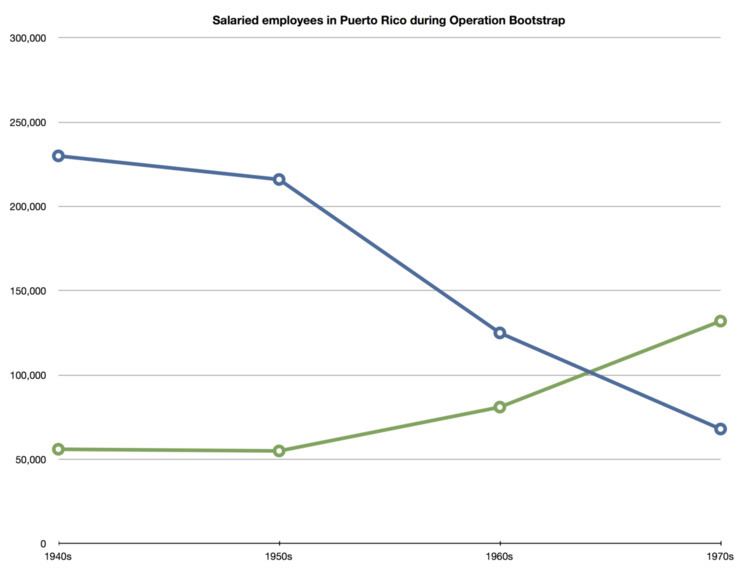 | ||
Operation Bootstrap (Spanish: Operación Manos a la Obra) is the name given to a series of projects which transformed the economy of Puerto Rico into an industrial and developed one. The federal government of the United States together with what is known today as the Puerto Rico Industrial Development Company set forth a series of ambitious economical projects that evolved Puerto Rico into an industrial high-income nation. Bootstrap is still considered the economic model of Puerto Rico as the island has still not been able to evolve into a knowledge economy.
History
The island's traditional economy was based around sugarcane plantations. By the middle of the twentieth century it remained one of the poorest in the Caribbean, and in 1942 the United States government began Operation Bootstrap, which invested millions of dollars into the Puerto Rican economy. Envisioning that a densely populated island like Puerto Rico with now over 1000 persons per square mile could not subsist on an agrarian system, the government's Administration of Economic Development —today known as the Puerto Rico Industrial Development Company (PRIDCO)— encouraged the establishment of factories.
The US government in Puerto Rico enticed US companies by providing labor at costs below those on the mainland, access to contiguous US markets without import duties, and profits that could transfer to the mainland free from federal taxation. The Administration of Economic Development invited investment of external capital, importing the raw materials, and exporting the finished products to the mainland. To entice participation, tax exemptions and differential rental rates were offered for industrial facilities. As a result, Puerto Rico's economy shifted labor from agriculture to manufacturing and tourism. The manufacturing sector has shifted from the original labor-intensive industries, such as the manufacturing of food, tobacco, leather, and apparel products, to more capital-intensive industries, such as pharmaceuticals, chemicals, machinery, and electronics. Through this project, a rural agricultural society was transformed into an industrial working class.
Although initially touted as an economic miracle, by the 1960s, Operation Bootstrap was increasingly hampered by a growing unemployment problem. As living standards and wages in Puerto Rico rose, manpower-intensive industries faced competition from outside the United States. It also faced criticism from civil rights groups and the Catholic Church, who perceived the government promoting birth control, encouraging surgical sterilization, and fostering the migration of Puerto Ricans to the United States.
As of 2005 the continental United States remains Puerto Rico's major trading partner, received 86% of Puerto Rico's exports and providing 69% of its imports.
